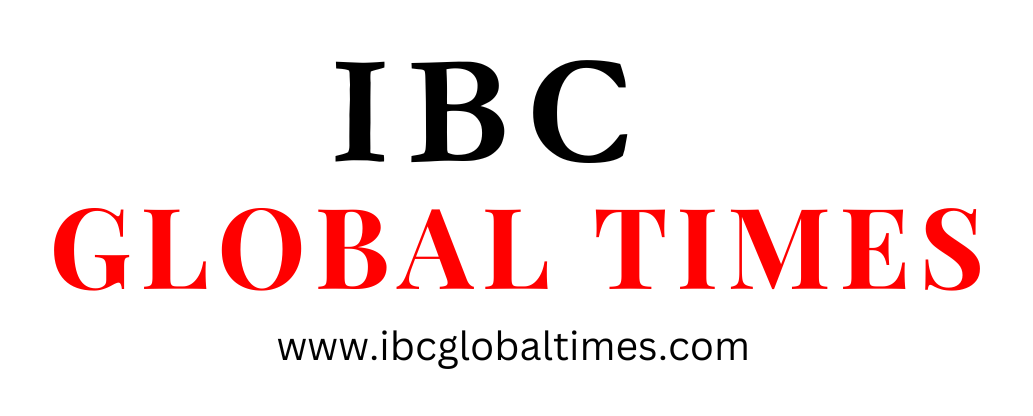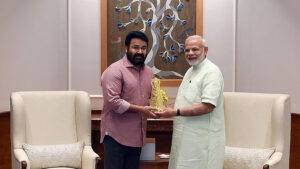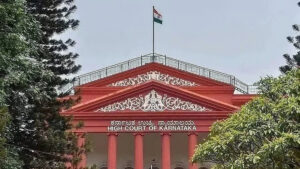A Week of Global Ambitions
On May 14, 2025, U.S. President Donald Trump declared it an “amazing week” for his administration, touting a series of diplomatic and domestic achievements. Speaking to reporters, he claimed credit for sealing a trade deal with China, slashing prescription drug prices, and, most notably, convincing India and Pakistan to de-escalate tensions following a dangerous four-day military confrontation. “I did a good job,” Trump asserted, emphasizing his role in brokering a ceasefire between the two nuclear-armed South Asian neighbors. His comments came in the wake of India’s Operation Sindoor, a series of missile strikes targeting terrorist infrastructure in Pakistan and Pakistan-administered Kashmir (PoK), and Pakistan’s retaliatory shelling across the Line of Control (LoC). The ceasefire, announced on May 10, halted the escalating conflict, but Trump’s repeated claims of mediation have sparked debate, with India firmly denying any U.S. involvement and opposition parties questioning the optics of his announcements.
The India-Pakistan conflict, rooted in the April 22 Pahalgam terror attack that killed 26 civilians, predominantly Hindu tourists, had pushed the subcontinent to the brink of war. India’s strikes, launched in response to what it called Pakistan-backed terrorism, and Pakistan’s counteroffensive, which included drone incursions and artillery fire, raised global fears of a nuclear escalation. Trump’s assertion that he persuaded both nations to “trade the things you make so beautifully” rather than “trade nuclear missiles” has added a layer of complexity to an already volatile situation. This blog explores the events leading to the ceasefire, Trump’s claims of diplomatic triumph, India’s rebuttal, and the broader implications for South Asia and global diplomacy.
The Pahalgam Attack and Escalation
The crisis began on April 22, 2025, when terrorists from Lashkar-e-Taiba (LeT) and its offshoot, The Resistance Front (TRF), attacked Baisaran Valley near Pahalgam, a popular tourist destination in Indian-administered Jammu and Kashmir. The assailants, identified as Adil Hussain Thoker from Anantnag and two Pakistani nationals, Hashim Musa and Ali Bhai, killed 26 people, including 25 tourists and a local pony ride operator. The attack, which targeted Hindu civilians with AK-47s and M4 carbines, was the deadliest in the region since the 2019 Pulwama bombing. India accused Pakistan’s Inter-Services Intelligence (ISI) of orchestrating the attack, citing evidence of logistical support and training. Pakistan denied the allegations, offering a neutral investigation, but the massacre inflamed tensions, with India vowing a strong response.
On May 7, India launched Operation Sindoor, a tri-services operation involving 24 precision-guided missile strikes on nine terrorist facilities in Pakistan and PoK. The targets included operational bases of LeT, Jaish-e-Mohammed (JeM), and Hizbul Mujahideen in cities like Bhawalpur, Muridke, Muzaffarabad, and Kotli. Indian officials claimed over 100 terrorists were killed, including high-value targets like the son of JeM’s PoK commander, Mufti Asghar Khan Kashmiri. The operation, named after the vermilion mark symbolizing the blood of victims like Lieutenant Vinay Narwal, killed days after his wedding, was described as “measured, responsible, and non-escalatory” by Foreign Secretary Vikram Misri. Prime Minister Narendra Modi framed it as a rejection of Pakistan’s “nuclear blackmail,” signaling a new doctrine equating terrorism with acts of war.
Pakistan responded with heavy artillery shelling across the LoC, targeting Indian military positions and civilian areas in Jammu and Kashmir, Punjab, and Rajasthan. The shelling killed at least 16 civilians, including 12-year-old twins in Poonch, and caused widespread panic with drone and missile attacks as far as Gujarat’s Kutch. Prime Minister Shehbaz Sharif condemned India’s strikes as a “blatant act of war,” claiming 31 civilians, including children, were killed, not terrorists. Pakistan’s military escalated drone incursions, and a meeting of its nuclear oversight body hinted at the readiness of its arsenal, raising global alarm. The four-day clash, from May 7 to May 10, was the most intense since the 2019 Balakot airstrikes, prompting urgent international calls for de-escalation.
Trump’s Diplomatic Claims
On May 10, a ceasefire was announced, halting land, air, and sea operations along the LoC and International Border. Trump quickly claimed credit, stating his administration “successfully brokered a historic ceasefire” to prevent “death and destruction.” In a Truth Social post on May 11, he praised the “strong and unwaveringly powerful” leadership of India and Pakistan, vowing to work toward a solution to the Kashmir dispute, which he described as a “thousand-year” conflict. During a press gaggle aboard Air Force One en route to Rome, Trump elaborated, saying he told both sides, “Let’s not trade nuclear missiles, let’s trade the things you make so beautifully.” He reiterated these claims on May 14 in a Fox News interview, linking the ceasefire to potential U.S. trade deals and suggesting a “nice dinner” between Modi and Sharif to cement peace.
Trump’s team amplified his narrative. Secretary of State Marco Rubio announced that he and Vice President J.D. Vance had engaged with Modi, Sharif, External Affairs Minister S. Jaishankar, National Security Advisor Ajit Doval, and Pakistan’s Army Chief Asim Munir, securing the ceasefire and setting the stage for talks at a neutral site. Commerce Secretary Howard Lutnick and incoming U.N. Ambassador Mike Waltz lauded Trump’s efforts, with far-right activist Laura Loomer even suggesting he deserved a Nobel Peace Prize. Trump’s supporters framed the ceasefire as a triumph of his deal-making prowess, aligning with his broader focus on trade and competition with China.
However, the ceasefire was marred by immediate violations, with Pakistani drones spotted in Jammu and Kashmir hours after the agreement. Posts on X reflected skepticism, with users noting Pakistan’s fresh attacks as a “spectacular diplomatic failure” for Trump’s “art of the deal.” The timing of Trump’s announcements, often preceding official statements from India or Pakistan, raised questions about whether his claims were premature or politically motivated to bolster his image as a global peacemaker.
India’s Firm Denial
India categorically rejected Trump’s claims of mediation. On May 13, the Modi government clarified that the ceasefire was a bilateral agreement with Pakistan, with no room for third-party intervention. Foreign Secretary Vikram Misri emphasized that India’s actions, from Operation Sindoor to the ceasefire, were driven by its sovereign interests, particularly its fight against cross-border terrorism. External Affairs Minister S. Jaishankar, in talks with Rubio, underscored India’s “targeted and measured” response to the Pahalgam attack, urging the U.S. to press Pakistan on its terror links. Modi, in a May 12 address, stated that India had only “paused” its military actions, ready to resume if provoked, and reiterated that Jammu and Kashmir is an integral part of India, not open for negotiation.
India’s stance reflects its long-standing policy of non-interference in bilateral matters, especially with Pakistan. The 2019 abrogation of Article 370, which boosted Kashmir’s integration and economic growth, has strengthened India’s resolve to handle the dispute independently. Analysts like Brahma Chellaney argued that by agreeing to a ceasefire under U.S. pressure, India risked drawing international attention to Kashmir rather than Pakistan’s role in terrorism. Domestic opposition parties, including Congress, RJD, and Shiv Sena (UBT), seized on Trump’s claims to criticize Modi’s government. Congress leader Jairam Ramesh demanded an all-party meeting and a special parliamentary session to discuss Pahalgam, Operation Sindoor, and the ceasefire, accusing Modi of losing “moral authority” by allowing Trump to announce the truce. Posts on X echoed this sentiment, with users questioning whether Modi would clarify the U.S. role.
Pakistan, in contrast, welcomed Trump’s involvement. Prime Minister Sharif thanked the U.S. for “acknowledging” Pakistan’s counter-terrorism efforts, expressing willingness to partner for regional peace. Former Foreign Minister Bilawal Bhutto Zardari suggested Pakistan agreed to the ceasefire with U.S. guarantees of broader dialogue, particularly on the Indus Waters Treaty, which India suspended amid the conflict. This divergence—Pakistan’s openness to U.S. mediation versus India’s rejection—highlights the asymmetry in how the two nations perceive external involvement in Kashmir.
The Human and Economic Toll
The conflict’s toll was staggering. The Pahalgam attack claimed 26 lives, including Lieutenant Vinay Narwal, whose widow’s grief galvanized national outrage. Cross-border shelling and drone attacks killed over 20 more, including civilians like the Poonch twins and Rajouri’s Additional District Development Commissioner. Border villages in Kashmir, from Uri to Gurez, were evacuated, with journalist Anurag Dwary describing a “silence of an exodus.” Infrastructure damage was extensive, with Indian strikes crippling nearly 20% of Pakistan’s air force facilities and Pakistani shelling destroying homes in Indian-administered Kashmir.
Economically, the ceasefire brought relief. Pakistan’s stock index surged 9.4% on May 12, and India’s Nifty 50 rose 3.8%, its best session since February 2021. However, the suspension of the Indus Waters Treaty, vital for agriculture, and trade disruptions threatened long-term stability. Jammu and Kashmir Chief Minister Omar Abdullah announced Rs 10 lakh ex-gratia payments for families of shelling victims, while Modi hailed India’s unity in foiling the terrorists’ communal designs, with Pahalgam’s shopkeepers chanting “Hindustan Zindabad.”
Domestic and International Reactions
In India, the ceasefire and Trump’s claims sparked political controversy. Congress chief Mallikarjun Kharge accused the government of ignoring intelligence warnings before Pahalgam, while BJP leaders like Manoj Sinha dismissed such criticism as demoralizing to the armed forces. Internationally, reactions varied. U.S. Secretary of State Rubio reaffirmed support for India’s anti-terrorism fight but urged de-escalation, while Qatar’s Amir condemned the Pahalgam attack. China offered a “constructive role,” and the UK and UN called for dialogue. However, Trump’s proposal for talks at a neutral site irked many Indians, who view Kashmir as non-negotiable.
Analysts like Manjari Chatterjee Miller noted the U.S. faces a dilemma: supporting India risks alienating Pakistan, while appearing to interfere in Kashmir could strain U.S.-India ties. Lisa Curtis, a former National Security Council official, highlighted the U.S.’s unique influence over both nations, driven by Pakistan’s desire for better ties and India’s role in countering China. Yet, Trump’s focus on trade as a diplomatic tool—contradicted by Indian sources denying trade discussions—suggests his mediation claims may prioritize political optics over substance.
A New Normal in South Asia?
Operation Sindoor and the ceasefire have reshaped India-Pakistan dynamics. India’s strikes, targeting deep inside Pakistan, signal a doctrine where terrorism triggers “visible and targeted” consequences, challenging Pakistan’s nuclear deterrence. Modi’s vow to dismantle terror infrastructure and reclaim PoK underscores this shift, but it lowers the threshold for future conflicts. Pakistan’s drone incursions and nuclear posturing indicate its readiness to escalate, while the Indus Waters Treaty’s suspension remains a flashpoint.
For Kashmir, the attack reversed gains in tourism and stability since 2019. Ongoing operations, like the May 13 Shopian encounter that killed three terrorists, highlight the persistent militant threat. The ceasefire, while holding as of May 14, is fragile, with both sides on edge. Trump’s mediation claims, though dismissed by India, have revived international interest in Kashmir, complicating India’s bilateral stance. Former Pakistan NSA Moeed Yusuf warned that without addressing underlying issues, the cycle of brinksmanship will persist, risking war in a nuclear environment.
Looking Ahead
As of May 14, 2025, the ceasefire holds, but the three Pahalgam terrorists remain at large, and India’s security forces are on high alert. Modi’s meetings with Defence Minister Rajnath Singh and NSA Ajit Doval signal readiness for further action, while Pakistan’s warnings of retaliation loom. Trump’s insistence on credit, despite India’s denials, underscores his desire to project global influence, but it risks straining U.S.-India ties if perceived as interference.
The Pahalgam attack and its aftermath have exposed the fragility of peace in South Asia. For Kashmir’s people, caught in a decades-long conflict, the ceasefire offers temporary respite, but the path to lasting peace requires tackling militancy, terrorism, and the Kashmir dispute itself. As Trump pushes for a “nice dinner” and trade deals, India and Pakistan must navigate their own terms, aware that the world watches anxiously for the next spark in this volatile region.
Sponsored
FACTS Transcripts
Apply for a University document anywhere
https://www.factstranscript.com
Quick Transcripts for popular Universities, check your University name now and get started. We help you to get your transcript application online which is accepted for use of IRCC.
No DD, NO Paperwork. 100% Authentic, Reliable.
FACTS Transcripts Charges · Reviews · Assam Universities · Home · Know your University









